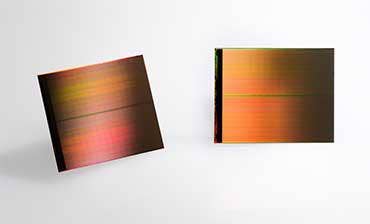Intel, Micron Intro New Memory Tech: Faster, Denser, More Endurable Than NAND

Intel and Micron Technology Tuesday unveiled a new form of non-volatile memory technology they claimed will change the way the IT industry approaches memory-intensive and storage-intensive applications.
That new memory, with the moniker 3D XPoint, is slated to fit between today's DRAM and NAND technologies in terms of performance, density and price, with the key characteristic being its non-volatile memory, executives of the two memory developers said during a Tuesday press conference.
3D XPoint memory technology was designed from the ground up with new processes and materials to increase performance and density over current NAND technology while ensuring the memory is non-volatile, which means that the memory keeps its state when power is turned off.
[Related: The 10 Coolest Flash Storage And SSD Products Of 2015 (So Far)]
Rob Cooke, senior vice president and general manager of the Non-Volatile Memory Solutions Group at Intel, Santa Clara, Calif., said the result is a technology that features 1,000 times the performance and 1,000 times the endurance of conventional NAND technology, and is about 10 times as dense.
That makes it a new class of memory, Cooke said. "It's not just a little bit faster, or [has] a little bit more endurance," he said. "It's a lot."
This is exciting news, especially for the high-performance computing business, said Dominic Daninger, vice president of engineering at Nor-Tech, a Burnsville, Minn.-based custom system builder with a large high-performance computing, or HPC, focus.
"We've been using more SSDs in a RAID-0 configuration to get the speed and capacity we need for performance," Daninger told CRN. "The bad thing with that is, in RAID-0, if any drive goes down, the system goes down. 3D XPoint memory technology would likely replace NAND-based SSDs in our HPC solutions."
Daninger said he remembers working with flash memory in the late '70s and early '80s and the problems with flash wearing out. "We're seeing the same issues over 30 years later," he said. "It's nice to finally see something better coming."
Brian Shirley, vice president of memory technology and solutions at Boise, Idaho-based Micron, said 3D XPoint memory technology fits squarely in between DRAM and NAND technology.
The read speed of DRAM is measured in the tens of nanoseconds, while the read speed of NAND is about 100 microseconds, or 10,000 nanoseconds, Shirley told CRN. 3D XPoint technology has a read speed of about 100 nanoseconds, he said.
"So we don't see this replacing DRAM," Micron's Shirley said. "3D XPoint technology will co-exist with both. DRAM will still be the fastest memory storage, while NAND will increasingly be the choice for volume storage. 3D XPoint will fit in between."
Cooke said 3D XPoint technology will be likely used for such things as increasing the memory available to in-memory databases; providing improved service-level agreements, or SLAs, because of the non-volatile nature; and increasing the performance and endurance of storage.
Shirley told CRN that existing data center equipment such as servers and workstations may or may not have to change to take advantage of 3D XPoint technology.
For instance, the new memory may be used to produce much faster SSDs than possible using NAND technology. "So a lot of the enabling work is already done," he said. "The IT industry already uses PCIe connectivity, and is adapting the new NVMe technology, so users should be ready for it."
For other applications, such as in-memory databases or high-performance computing, there will be some modernization needed, Shirley said. "Motherboards may need new slots for the memory, as well as new firmware and operating systems to use the new class of memory," he said.
Cooke said that 3D XPoint memory technology was co-developed by Intel and Micron. The first version, featuring 128-Gbit capacity in a two-layer chip, is expected to be produced starting in 2016 in the two companies' jointly owned manufacturing facilities, with the two vendors selling it separately.
Shirley explained that joint manufacturing but separate sales is the model the two vendors currently use with NAND memory.
"On the market side, we are independent," he said. "There is some level of competition. But this is a very big industry, and both companies have areas they focus on. It's been a very successful partnership."
Intel and Micron declined to discuss prices for the new 3D XPoint memory technology, and instead said they preferred to just talk about the technology for now. However, Cooke did say it would be priced between DRAM and NAND technologies.
PUBLISHED JULY 28, 2015